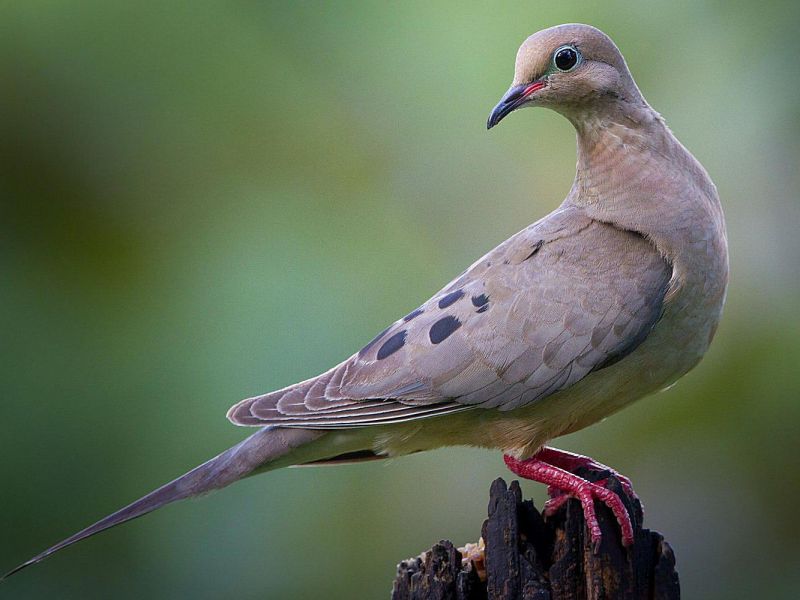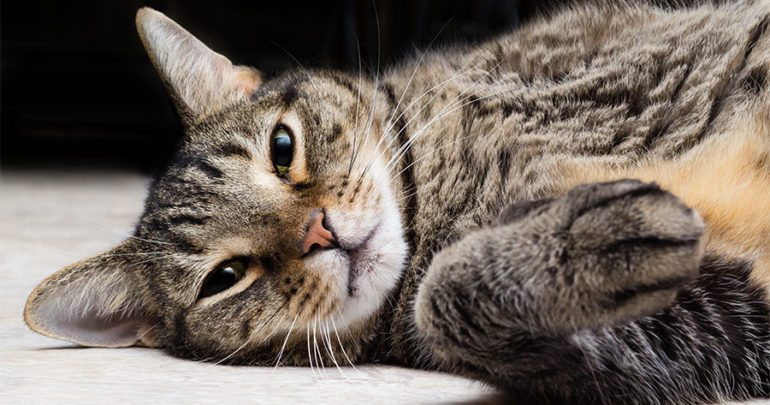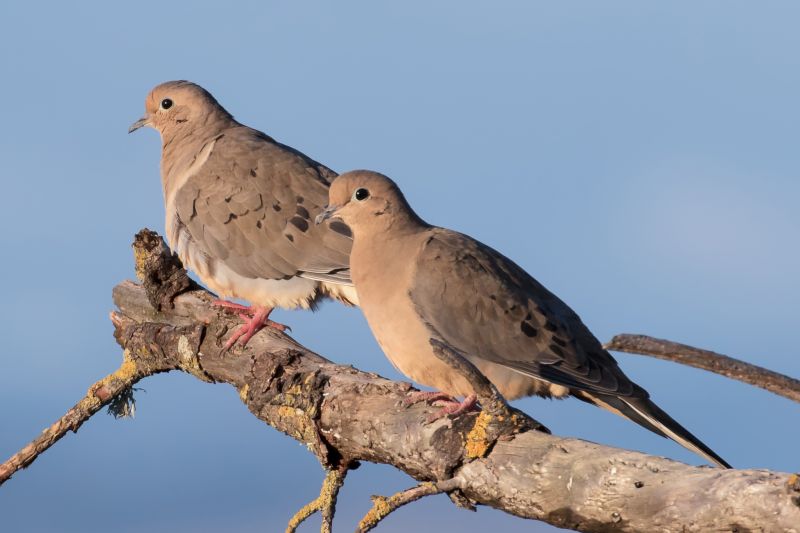Doves are some of the most commonly found birds in North America, and their population only continues to grow throughout the region. With more than a dozen species of doves in the United States, Canada and Mexico, they are easily spotted and common in urban areas. With a lifespan of between one and 31 years (quite a span!), doves are both fragile and hearty and their ability to withstand predators and disease make them a unique and valuable part of the bird community. How long doves live depends on their ability to stay alive despite conditions and influences that threaten them.

The Average Dove Lifespan
The average dove lifespan is 1.5 years, with more than 75 percent of doves dying before the first year. Some can live as long as five years, and if they survive the first year, their chances of survival increases drastically. The first year of life is hardest due to predators and illness, and many prioritize mating in order to ensure the survival of the species. Researchers who banded doves for tracking purposes discovered a dove who lived for 31 years. How long doves live depends heavily on their ability to fight off predators and avoid disease.
Conservation efforts are low for the dove as, despite their high mortality rates, they are thriving in North America. As of this writing, the global population is 120 million, with more than 80 percent spending their time in the United States, 19 percent in Mexico and 5 percent in Canada. They are not considered endangered and are not of concern to any conservation organizations.

Predators and Threats to the Dove’s Lifespan
Whilst in a vacuum doves will live a long time, the biggest threat to their lifespan comes in the form of predators and invasive species.
Because it nests on the ground, the dove is in the constant line of fire when it comes to predators. The dove’s most common predators include bobcats, opossums, raccoons, skunks, foxes, dogs and domestic cats. Rat snakes prey on their eggs, attacking in stealth and wiping out entire nests. Birds also hunt doves, and crows, owls, hawks, falcons and hawks often hunt doves. Its main defense against these predators is camouflage and concealment.
Outdoor Cats
Cats are some of the biggest predators that doves face, and domestic cats kill more than 2.4 billion birds a year. Cats have been responsible for the extinction of 63 known bird species, and major efforts are underway to educate pet owners about the dangers that cats pose to birds. Even when the cats are not hunting, they pose a danger and threat to birds. Their presence alone can make birds avoid their nests, leaving hatchlings to die rather than face death at the hands of a cat. Cats are hunters by nature, and often kill birds for sport. The average cat can kill two birds a week. Indeed, the birth of a litter of outdoor feral kittens often signals the death of an entire clutch of doves.
Pet owners are urged to keep cats indoors as cats are indiscriminate hunters who will kill endangered birds with impunity. Cats are also responsible for interfering with the migration patterns of certain birds, including doves. Doves will often change their migration habits in order to avoid predators, and some will find their mating rituals interrupted by the threat of cats. Birds pollinate plants, control insects and promote climate protection, and the presence of outdoor cat threatens that delicate coexistence.
Cats also carry toxoplasmosis, a disease that is fatal to birds, and doves in particular. The presence of cats in urban environments has a great bearing on how long doves live. Cats are one of the biggest predators of birds, and one that humans have the most power to control.
Invasive Species
Mice and rats have been responsible for more than 70 percent of all bird extinctions, and doves are certainly in that category. Birds who have evolved with few natural predators are especially vulnerable, but this typically does not apply to North American doves. Not only do rats and mice attack hatchlings, they also contaminate the dove’s nesting area with disease. Efforts to control rat populations usually lead to harmful toxic exposure that can also kill doves.
Hunting
Predators and disease are not the only threats to a dove’s lifespan. Doves are popular hunting birds, and excessive hunting has threatened species in some areas of the United States. Game wardens and park rangers often set limits on the number of doves that hunters can kill, but even these efforts have not been enough to save them. It’s not only the hunter’s gun that can kill the dove. Since they are foraging birds, they have been known to eat the lead pellets left behind in areas where hunting for sport is popular. Some birds have been reported as eating as many as 40 pellets.
Habitat Loss
Another threat to the dove’s lifespan is loss of habitat. Excessive development has meant that there are fewer trees available for mating and nesting, driving the dove out of urban areas. In North America, more than 290 million acres of grassland has been converted to farming areas, leaving little space for the birds that call it home. Large-scale logging operations have also threatened the species, leading to a decrease in population of doves nationwide.
Some species are so threatened that entire conservation groups have developed efforts to save the population. The turtle dove has been so affected by widespread agriculture that it has been classified as vulnerable to extinction in both the UK and United States. The plants that they typically use for mating and nesting are routinely treated with herbicides and destroyed. The doves also consume the pesticides and become sick and die.
Urban doves and pigeons are often killed by humans, both intentionally and unintentionally. They are increasingly hit by cars, killed for sport, or die after flying into windows.
Climate Change
Climate change is a threat to doves as their migratory patterns are dictated by the weather. Abnormally hot fall months confuse the birds, causing them to start their migration habits later than intended. In addition, the early onset of spring can leat to the premature birth of the caterpillars that doves need to survive. By the time the doves return from their southern migration and start mating, the catepillars have already turned to butterflies, leaving the doves without much-needed sustenance.
Wildfires, heavy rainfall and warmer than average summers can threaten both the habitats and migration patterns of doves and other North American birds. Conservation efforts have been focused on stopping the effects of climate change and building artificial habitats in order to protect the birds and promote mating.
Diseases
One of the major contributing factors to a dove’s lifespan is its ability to avoid contracting common diseases. Doves are prone to illnesses that they typically develop during the nesting period, and one infected dove can kill the entire nest. Trichomoniasis is a particular threat to the dove’s lifespan, and is highly contagious among the species. The largest recorded outbreak of the disease happened in Alabama and resulted in the death of more than 100,000 doves. Outbreaks of this common disease can cause concern about the long-term survival of the species, so wildlife experts take steps to stop the spread whenever possible.
Trichomoniasis is also found in predatory animals like raptors, so even one non-fatal encounter with one of the infected predator can lead to death for the dove. Trichomoniasis is not particularly harmless or fatal to humans. The disease is passed from adult doves to their young during feeding. The adult doves consume diseased carrion or drink infected water, then pass the bacteria on to their feeding young. The young typically die shortly after infection. This diseases is particularly deadly, causing a yellowish growth in the dove’s mouth that prevents food consumption and eventually starves it to death.
Doves are also susceptible to death by parasites. The most common parasites to infect doves are tapeworms, mites and lice. They are also susceptible to Avian Pox, which is transmitted from insects to doves. Symptoms of Avian Pox include difficulty breathing, eating and drinking, and often causes death shortly after infection. Doves who are afflicted by this disease often develop pus-filled lesions on their faces, legs and underbelly. Outbreaks of Avian Pox are especially devastating and can wipe out entire species if left unchecked.
Salmonella is common among feeding birds, and many well-meaning homeowners provide the perfect environment for salmonella to thrive. Birds that eat from communal feeders may contract it from infected birds, spreading it to the water source and infecting other birds that use the same feeder and water dispenser. Salmonella poisoning causes devastating symptoms like diarrhea, lethargy and eventual death. It takes doves 1-2 days to die from salmonella poisoning, during which time they can spread the disease to other birds. Homeowners who feed doves and other birds are encouraged to replenish food often, rinsing bird feeders frequently and washing out bird baths and water fountains that birds frequent. Homeowners are also advised that salmonella can be spread to humans who handle dead birds.

Mating Habits of Doves
There is a direct correlation between the dove’s ability to fight of predators and avoid disease in its first year of life and its ability to continue the species through mating. Doves reach sexual maturity at one year of age, and those that are strong enough to make it to this point start the mating dance that will continue the life cycle. They are able to mate year round, but are especially fruitful in the spring and summer months. Fecund female doves produce several clutches of offspring each year, clearing out one nest before welcoming more young.
Male doves are territorial, chasing away all other doves when he finds an area to nest. When he has secured his nesting territory, he circles around in an elaborate courtship ritual meant to attract female doves. He then perches on a tree and sings a loud, cooing mating call that bring the female doves into his sphere. Once the male dove has selected his partner, they mate for life, producing offspring each year.

Nest Building
The male and female doves typically build their nests together, the male going out to collect twigs, pine needles and grass stems to bring back to the female, and the female weaving the pieces together to form an intricate nest. The pair then build the nest, which measures about 8 inches across, over the course of 2-4 days. During this building ritual, the male stands on the female’s back, transferring the building components to her beak to beak.
The male and female doves raise their young together, with the female sitting on the eggs at night and the male taking over during the day. The female lays two white eggs, and the pair continue to trade off incubation duties until day 15, when the eggs hatch. When the doves are born, the pair take turns feeding the young crop milk for 14 days, which they produce in their throats (gullets). During this feeding period, the hatchlings learn to fly. After three weeks, they are ready to leave the nest and continue the cycle of life, independent of their parents.
Mourning doves, one of the most common species, can be found all throughout the United States, in the lower 48 as well as in Alaska. The doves migrate south for the winter, with some traveling to the southern United States, and others traveling as far as southern Mexico before returning to mate in the North.
Doves eat a variety of foods, but feed mostly on seeds. Some of the urban dwelling doves subsist on human foods like bread and nuts.
Doves are some of the most prolific birds in North America, with a lifespan of between one and 31 years. If you were wondering how long doves live, it’s helpful to know that the average dove lives, on average, two years. Due to habitat threats, disease and predators, however, many do not survive the first year. The North American dove, however, is a hearty bird, working hard to reproduce and propagate the species and are expected to stick around for years to come.
Related
- Ever wondered exactly why owls choose to hoot at night? We have too. And we did the research: Why Do Owls Hoot At Night?
- Hummingbirds are the little birds that could. These small and feisty little birds can migrate thousands of miles during their annual migration. Read more on how hummingbirds migrate and get to know our little friends better.
i have a dove like in this picture. it flew into the window and hurt pretty bad. i doctored it up and is now alive and flys around the house. i’m afraid to turn it loose for i have lots of wild animals out side. plus cats i did have a white dove for 21 years before she died.